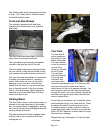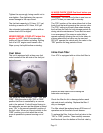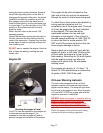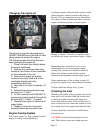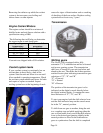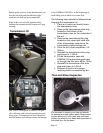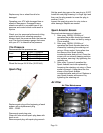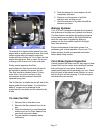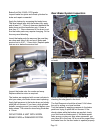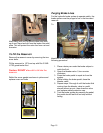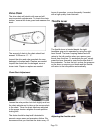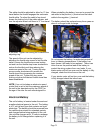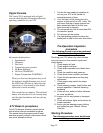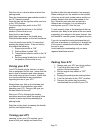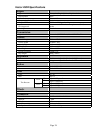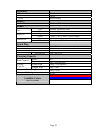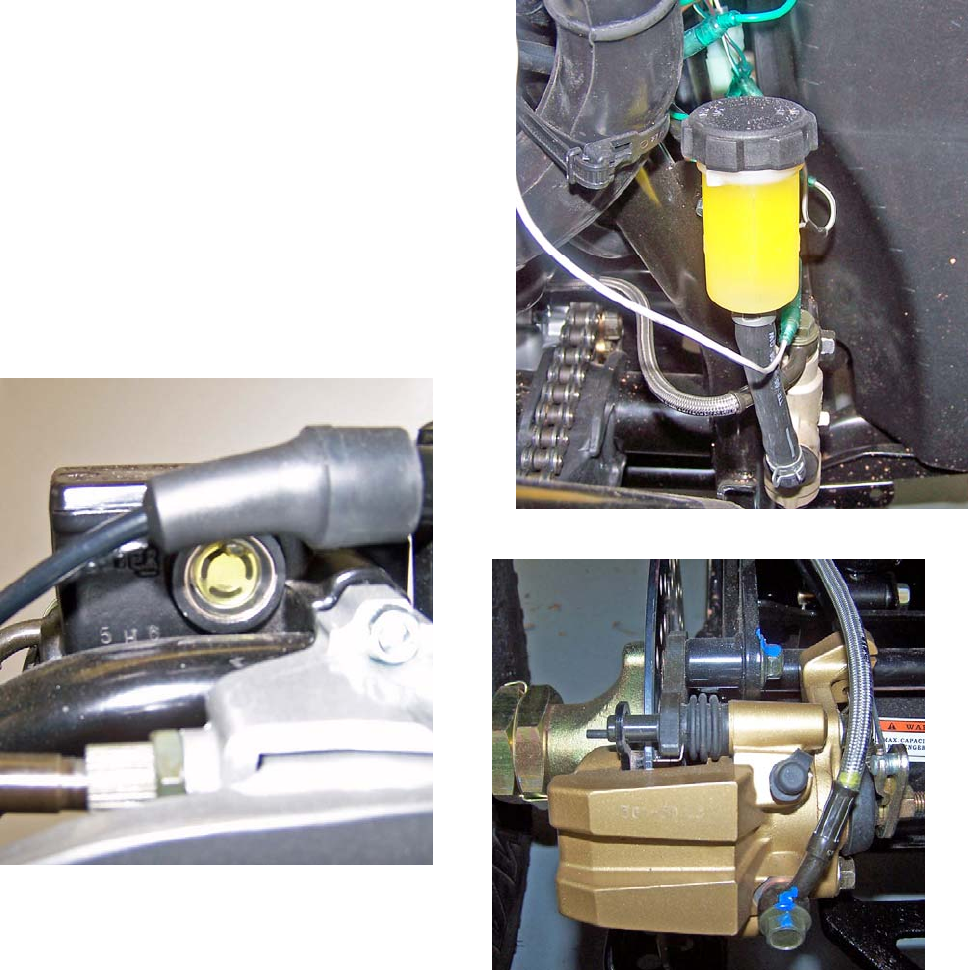
Page 18
Brake fluid Dot-3 SAE-J1703 grade.
Inspect brake line joints and wheel cylinders for
leaks and repair as needed.
Apply the brakes by squeezing the brake lever.
The level should stop with the brakes fully apply
and at least ½” / 13mm of clearance between the
brake lever and the handle bar grip. It there is
less than ½” / 13mm clearance or the lever is not
firm the brake pads may require changing. Or the
line may need bleeding.
Insect the brake pads for wear and be sure they
are clean and free of dirt and mud. Brake pad
service limit is 0.06” / 1.5mm thick. Replace pads
that are at or below the service limit.
Inspect the brake rotor for cracks and warp.
Replace defective rotor as required.
The brakes are equipped with a wear indicator to
alert you when your brake shoes need replacing.
Apply light pressure to the brake lever and slowly
push the unit forward. If you hear a high pitched
metallic scraping sound, you need to replace your
brake shoes. The minimum shoe lining thickness
is 1.5mm.
DO NOT RIDE A UNIT WITH WORN
BRAKE PADS or DAMAGED ROTOR.
Rear Brake System Inspection
Visually inspect the brake hose for any signs of wear
or leaks.
Check the fluid level in the fluid reservoir by
checking the site glass for the level.
The fluid Reservoir should be at least ¾ full when
the unit is setting on a level surface.
Test the brakes by applying pressure to the brake
pedal and trying to push the unit forward. If the
wheel rotates while the brakes are applied, check
your fluid level and brake pads. If the brake pedal
feels spongy or does not stop when squeezed, you
may have air in the lines. All air must be purged from
the brake lines for the disc brake to operate properly.



